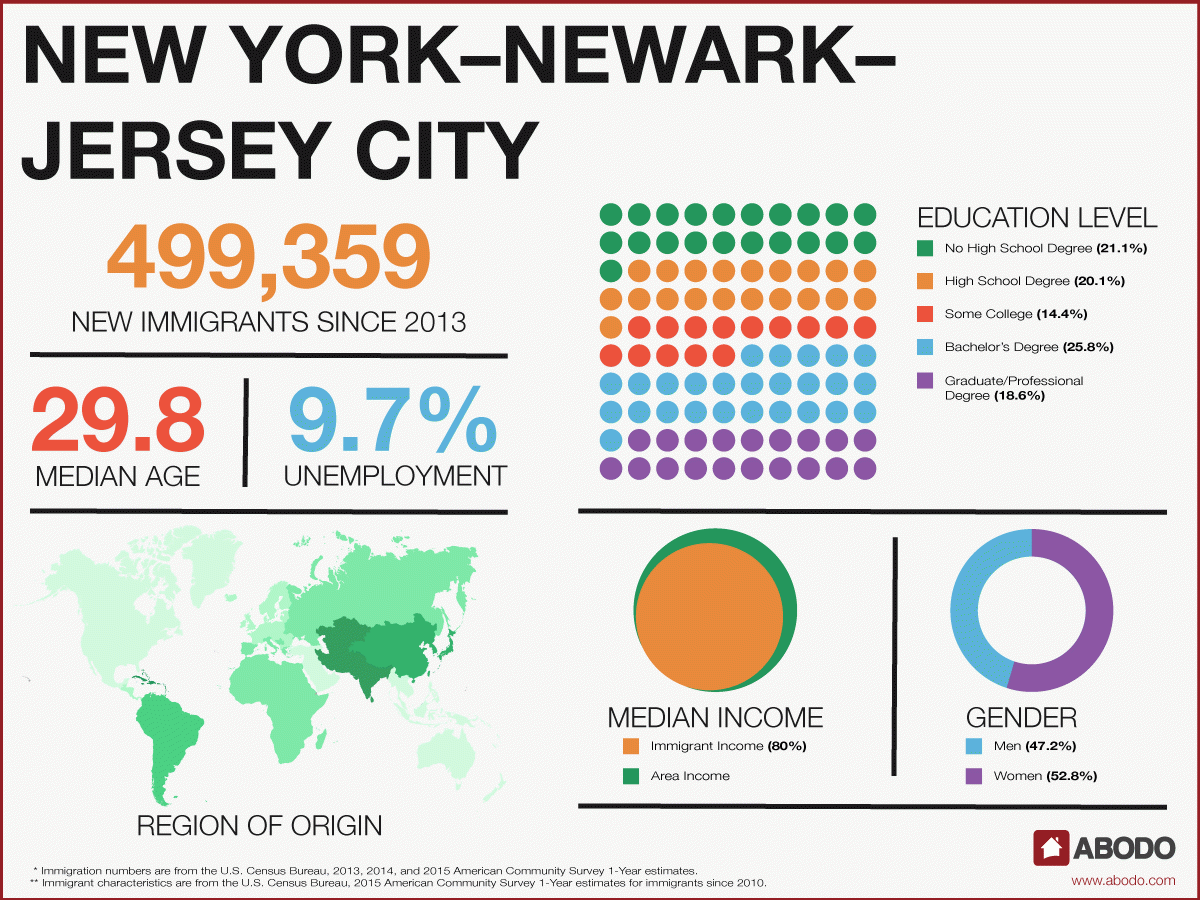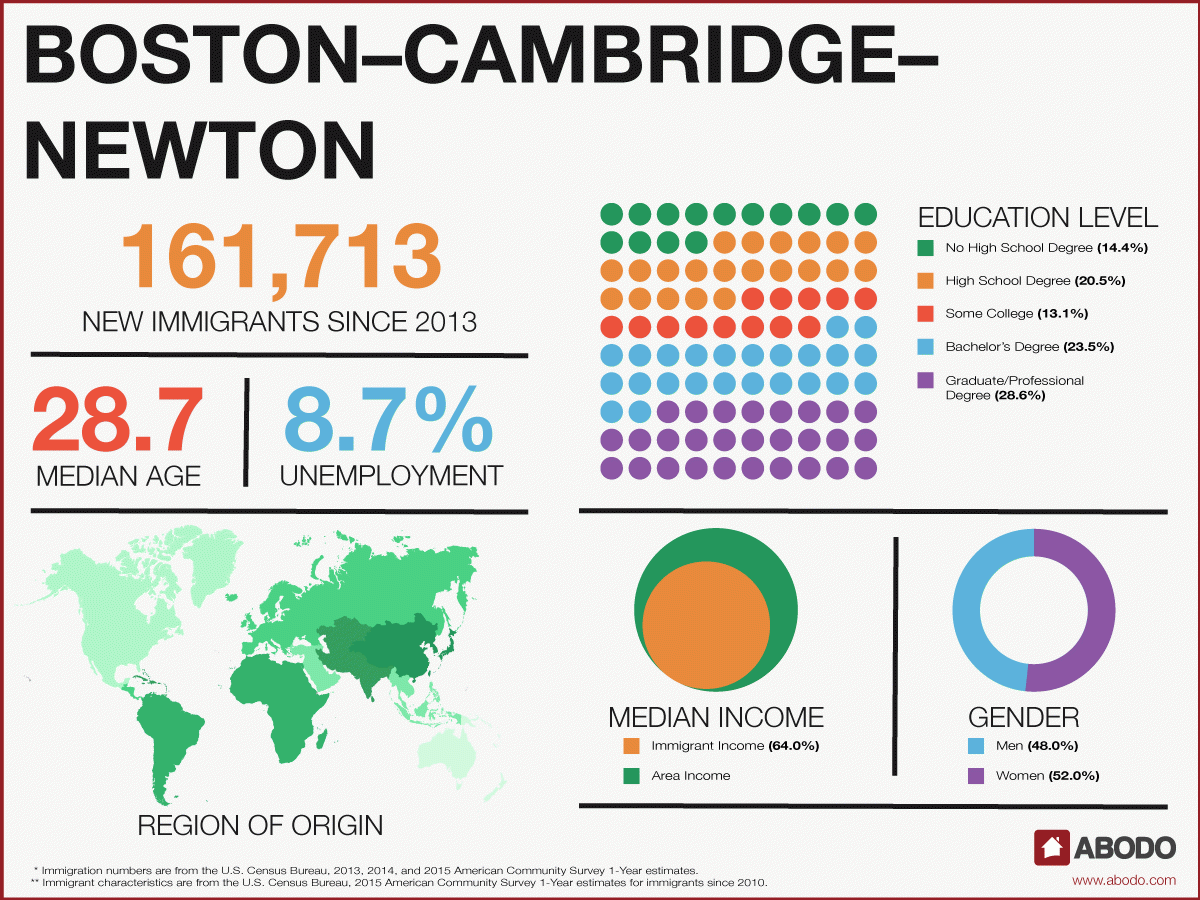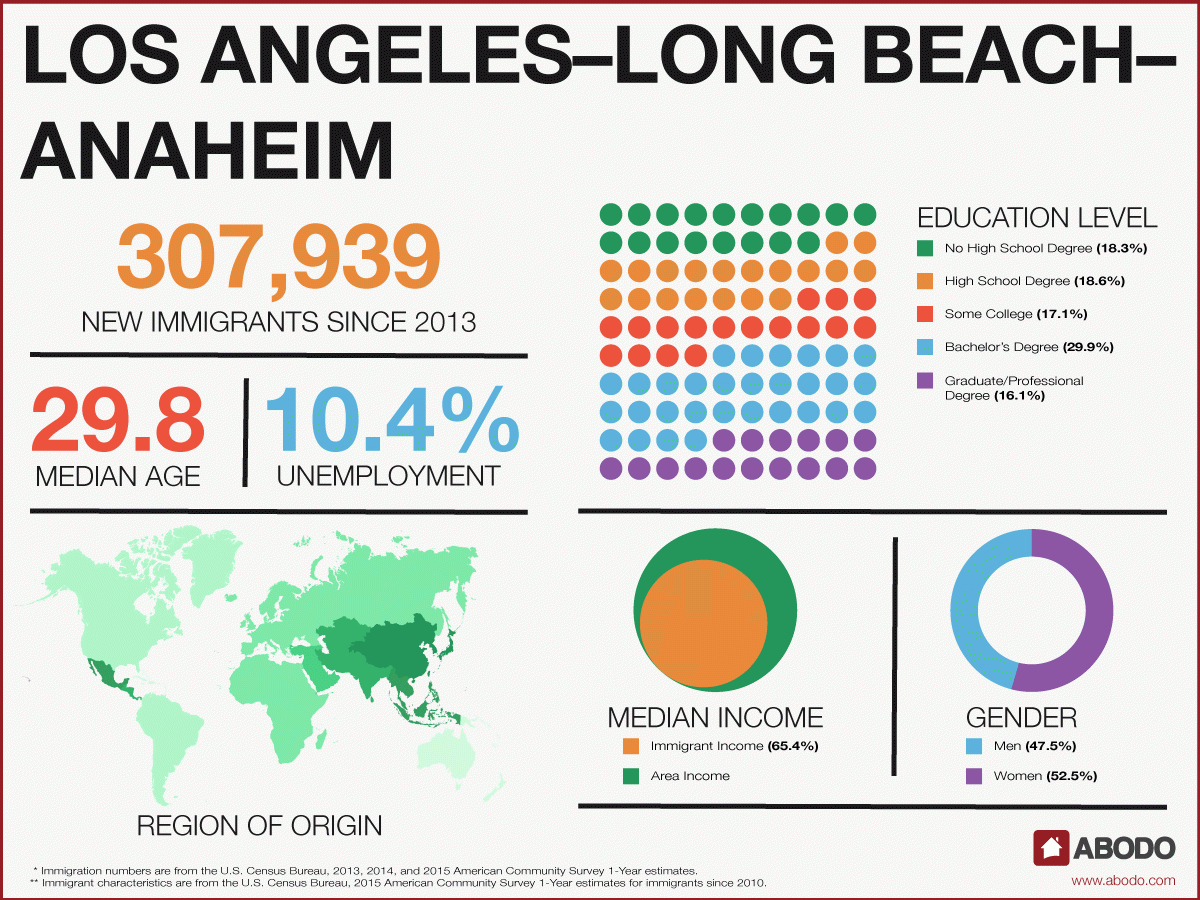Which Cities Have The Most Immigrants? New York City, Los Angeles Still Most Popular, Analysis Shows

The most popular destination for immigrants is the New York City area, and it's not even close, according to data analysis published last week by apartment rental site Abodo. A little fewer than half a million people are thought to have arrived from foreign countries to New York City, Newark and Jersey City between 2013 and 2015.
The next most popular city was the Los Angeles area, also including Long Beach and Anaheim, which saw just fewer than 308,000 new arrivals from abroad in that time. Miami, Houston and Washington D.C. also all saw new immigrant arrivals totaling in excess of 200,000. Significant numbers were also attributed to Chicago, San Francisco/Oakland and Boston, which all saw new immigrant numbers of between 160,000 and 170,000.
The data was calculated using American Community Survey estimates and information from the U.S. Census Bureau and includes both documented and undocumented immigrants.
That New York City is the most popular destination is no surprise. Its tradition as the welcome point for new arrivals to the United States remained intact, with the city now home to more than 3 million immigrants, twice as many as the next highest destination. Immigrants account for around 37 percent of New York City’s population, a number that has more than doubled since 1970.
What has changed is the location from which immigrants are arriving. Rather than from Europe, the majority of immigrants to New York City are now making the trip from South Central and East Asia as well as the Caribbean. In Los Angeles, meanwhile, the majority of recent immigrants have been arriving from Southeast and East Asia as well as Central America.

One consistent fact for all of the cities listed, though, is that immigrants earn less than the general population. The biggest disparity was in the Boston area and its surrounding Cambridge and Newton areas, where immigrants made just 64 percent of the average median income. Unemployment rates for immigrants were also higher than for the general population, despite immigrants in Chicago and San Francisco having higher levels of educational attainment.

Those figures would appear to add further weight to evidence that suggested, counter to anti-immigration rhetoric, immigrants do not take jobs from American-born workers. And, while immigration concerns were a big part of Donald Trump’s successful presidential election campaign, Americans’ attitude to immigrants have actually become considerably more favorable in recent years.
From 2005 to 2015, the number of Americans indicating that they believed an increase of immigrant workers hurts U.S. workers overall declined from 55 percent to 45 percent, according to a Pew Research Study. Forty-two percent believed that more immigrant workers help Americans.

© Copyright IBTimes 2025. All rights reserved.





















